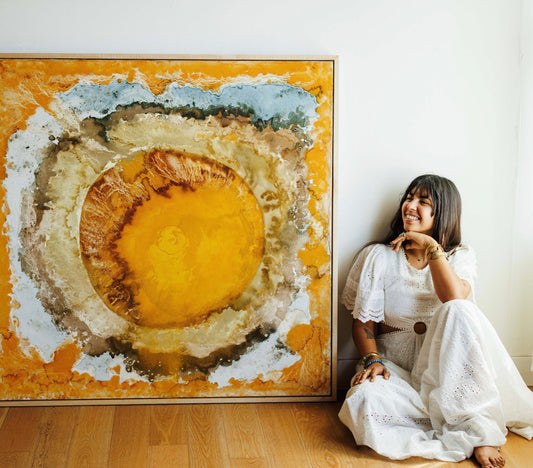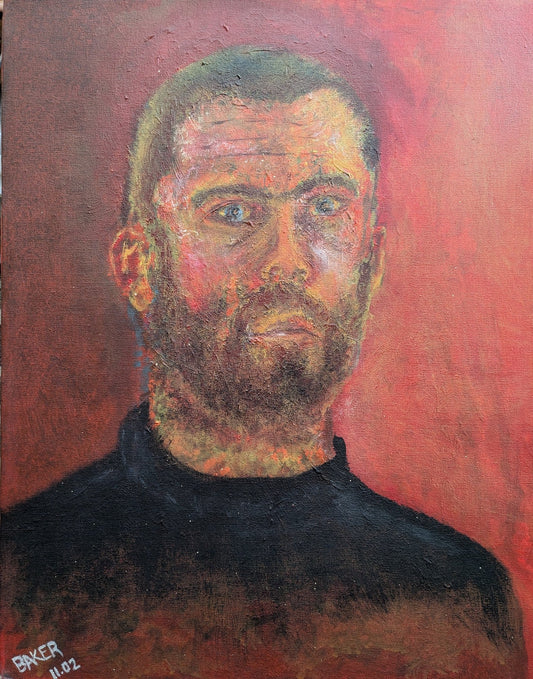Timur Zagirov is a 30-year-old artist born from a small town called Pskov, Russia. According to Zagirov, he’s been a full-time artist for three years now and even though he’s been doing art for only a short amount of time, he has always been interested in it since he was a child. “From an early age, I loved to draw, paint and sculpt from plasticine,” said Zagirov. However, studies and work took over most of his time, leading him put aside his personal creativity. It wasn’t until three years ago when he decided to return to what he always loved to do—art. According to Zagirov, it was his wife who helped him follow his passion. He said she “has always supported and motivated [him]”.

Zagirov had been exposed and given an art education for most of his life. For six years, he studied at a children’s art school. Afterwards, he went to college (known as vocational education in the U.S.) for four years as an architect technician, followed by another four years at a university to major in design and computer graphics. For him, he’s always been exposed to and surrounded by some form of art everywhere and anywhere.


According to the Stowe Gallery website, Zagirov gained international recognition after he reimagined the famous Vincent Van Gogh’s 1889 Self Portrait using wooden blocks. According to Zagirov, he never had a passion for working with wood. He was trying new techniques to create art and staying original. “It was in this way that I came to create paintings from wooden cubes,” he said.
When asked why he created pixelated paintings of well-known artworks, Zagirov stated that he doesn’t agree that his paintings are pixels. For him, “pixels imply flat dimensions” and his wooden paintings are created in “three-dimensional geometric dimensions” by adding volume and playing with the shadow and light. Zagirov uses wooden blocks that have “different shapes, saw angles, and [colors]” to create an illusion. If you moved from one angle to another, it would look like the painting itself is moving because of how light reflects and how the shadow reacts to the light.


His artworks somehow resonate to the word phenomenon called typoglycemia, in which words can still be read despite the letters being scrambled around. The reasoning behind it is because we read words as a whole and not letter by letter. Similar to Zagirov’s artworks, despite its “unusual effect of pixilation” according to Stowe Gallery, viewers can instantly recognize Zagirov’s version of well-known paintings like Vincent Van Gogh’s Self-Portrait and Starry Night because viewers are already familiar with the piece and see it as a whole image rather than block by block. Zagirov simply added his own rendition using wooden blocks.
When creating these wood paintings, all he needs is a MDF panel, paint, glue, and—wood, obviously. “But my art wouldn’t be so attractive if it weren’t for a couple of secrets,” Zagirov teased, “I think that every artist has a few secrets that he does not tell”. However, he does admit that his wood paintings do take a long time when done by himself. He admits requesting some help from some small factories to deal with MDF panels and wood. By doing this, he can concentrate on painting individual cubes instead of focusing all his time and energy cutting wood. However, he did cut the first 45,000 wooden cubes by himself, he said, but not all cubes became part of the painting.


And speaking of wood, Zagirov uses a specific type of wood when doing his paintings and that is pine. According to him, pine is a “very soft wood that allows the wax to be properly absorbed”. He mentioned that the wood must be kept in a “uniform microclimate” to avoid any deformation. When these woods are not properly maintained, the wood can “negatively affect” how they are glued on the panel.
Even though Zagirov gained his international recognition by recreating paintings using wooden blocks, he also does acrylic paintings. According to Zagirov, many of his paintings currently “remain behind the scenes” and he plans to create a separate social media page devoted only to his paintings “so as not to mix styles and interests”. This is currently set for his future plans, he admits. At this moment, he doesn’t do paintings because, unfortunately, “for certain reasons, [he] was forced to leave [his] country indefinitely” but with Zagirov’s optimism, he believes that this is “a great opportunity to find new ideas and inspirations”.


Adding on to his future plans, Zagirov stated that he plans on releasing limited editions of new prints in the next couple of months. As of right now, he admits that he is currently not doing any new projects but currently devotes this moment to finding new ideas and inspirations.
When asked how he would like people to feel or experience when viewing his artworks, he stated that he would like “to evoke any emotions… whether it is negative or positive”. For him, being an artist full-time is not just any work, but is an “unpredictable holiday, you never know what will happen in the end.”
Check out Timur Zagirov’s Instagram @zagirovart, subscribe to his website and check out his Foundation profile.
©ArtRKL™️ LLC 2021-2023. All rights reserved. This material may not be published, broadcast, rewritten or redistributed. ArtRKL™️ and its underscore design indicate trademarks of ArtRKL™️ LLC and its subsidiaries.





